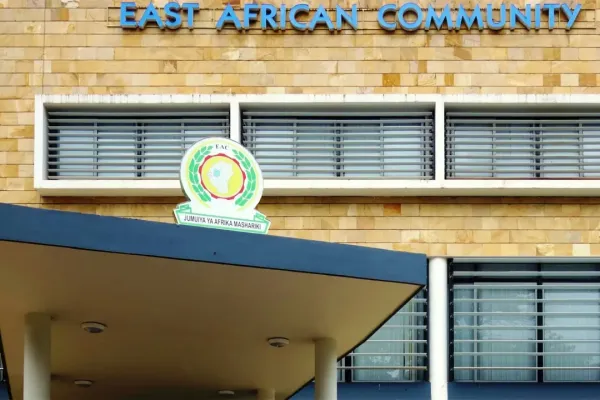Explainer: What Kenya losses in a single day of economic shutdown
In downtown Nairobi—a key engine of Kenya’s vibrant economic activity—the streets are ever busy round-the-clock, as individuals and businesses transact. So, when the streets suddenly fall silent, shop shutters closed, and matatus stay hidden far away in satellite towns, it’s not just a moment of protest—it’s an economic hit with a heavy bill.
This week, Kenya’s economy ground to a halt as thousands of protesters marked the 35th anniversary of Saba Saba, an agitation for civil liberties that gave birth to the 2010 Constitution after years of struggle. These protests came barely a week after Kenya’s youth, the Gen Zs, marked one year since June 25, 2024 revolt that led to the dropping of the Finance Bill 2024.
Major roads into and out of the city were closed or deserted, shops remained shut, supply chains choked, while destruction and uneasy calm blanketed many towns.
While millions of citizens rightfully focused on matters of justice, constitutional freedoms, and persistent economic hardship, there’s another story that is quietly unfolding in the background—one that is only told in billions. Let us break it down and see how much we lost as a nation.
Sh44 billion lost in just one day
Kenya's Gross Domestic Product (GDP), which is the total value of goods and services produced in a year—stood at roughly KES16.2 trillion in 2024. Official data shows that the capital city Nairobi accounts for 27.5 percent of this wealth, which is equivalent to KES 44 billion.
This means that when the Saba Saba protests hit Nairobi on Monday, roughly KES10 billion in economic output went unrealized—in a single day! To put that figure into perspective, KES10 billion is enough to pay the annual salaries of 4,000 entry-level teachers, each pocketing the current minimum wage of KES21,000 a month.
And yet, April data from the Teachers Service Commission (TSC) shows that senior secondary schools in the country currently face a shortage of 25,839 teachers—especially in critical subjects such as science, math and languages.
Here’s brief TSC data on the biting teacher shortage:
- Sciences: 8,742 teachers needed (32% of total shortage)
- Mathematics: 6,305 vacancies (24% of shortage)
- Languages: 5,112 unfilled positions (19%)
- Technical subjects: 3,680 gaps (14%)
- Humanities: 2,000 shortages (8%)
When the streets burn, taxman misses out big
GDP damage aside, the Kenya Revenue Authority (KRA), which is struggling to meet its monthly pro-rata collection target of KES200.06 billion, is reporting KES175.49 billion in revenues. This implies that on shutdown day, the taxman loses about KES5.8 billion in potential revenue collections—critical resources that could be used to equip hospitals, settle public debt, or support a myriad of social safety programmes that the protesters themselves are requesting.
Impact on wages and stretched payrolls
Additionally, the shutdown ripples through the country’s workforce. One can also look at it from lost man hours because we couldn’t go to work. As of 2023, approximately 20 million Kenyans were employed, including both formal and informal sectors. According to Trading Economics, Kenya’s national minimum wage has been KES15,201.65 per month or KES506.70 per day.
Looking at the bigger picture, this means that employers will have to dig deeper into their pockets to account for the KES10 billion in wages lost for the 20 million working Kenyans could have earned but had to stay at home due to the total shutdown of the economy, partly imposed by the National Police Service. While for some employers, it's the burden of stretching the already strained payrolls, some small businesses already struggling to pay may opt to not paying at all.
Fragile retail sector caught in web of losses
The chaos that unfolded during the protests also took a huge physical toll on leading retail players. Supermarket chains—Carrefour, Quickmart, Naivas, Magunas, and Kassmatt--suffered huge financial setbacks with looting and property destruction reported in some of their branches Nairobi, Naivasha, Nyeri, and Meru.
Also targeted by hundreds of goons and vandals were countless electronics shops, petrol stations, and bank ATMs. All these targets by vandals in the country’s retail space sends chills in an economy already choking under unemployment and high cost of living.
These incidents further raise hard questions for both local and foreign investors. For instance, why would one consider expanding their business operations through say higher staff numbers, or more outlets in such a hostile environment? Would you rather pour in more capital—or would you better hold your horses, watch, and reassess?
For international brands such as Carrefour and Bata, and even local enterprises with foreign investments like Quickmart, the unrest raises fundamental questions about Kenya’s stability as a retail destination.
Overall, heightened security costs, rising insurance premiums, and uncertain policy environments could discourage further foreign direct investment in Kenya’s retail sector.
Damage on Kenya’s future
As the fifth-largest contributor to Kenya’s economy, statistics show that the retail sector generated about KES873 billion in 2024, reflecting a steady growth rate of 3.8 percent. At the moment, it employs over nine million Kenyans, many in the informal setups and acts as bridge across value chains of the economy—connecting farmers, manufacturers, and consumers. The retail sector contributed approximately 8.1 percent to the national GDP as of 2023.
Additionally, the wholesale and retail trade is deeply intertwined with everyday commerce—from modern supermarkets to informal kiosks—playing a pivotal role in consumer access, product distribution, and market connectivity across urban and rural areas alike.
The sector is also one of Kenya’s most vibrant, driving youth innovation, e-commerce, and mobile money. Without visible efforts to improve public safety and security, investor confidence remains shaken, even as the entire ecosystem trembles.
Why we need a balance
For policyholders in government, the cost of doing nothing, that is, ignoring public frustration, rising inequality, and the culture of failed policies and broken promises—is arguably too heavy for an already weary economy to sustain.
The Gen Z voices in the streets are not just protesting for the sake of it; they are holding up a mirror to a system that is in urgent need of reform. While the government must listen to those voices, it must equally consider the delicate economic fabric that sustains Kenya. Every moment of national paralysis triggers a far reaching economic fallout, affecting jobs, livelihoods and investor confidence in the country of nearly 60 million people.



